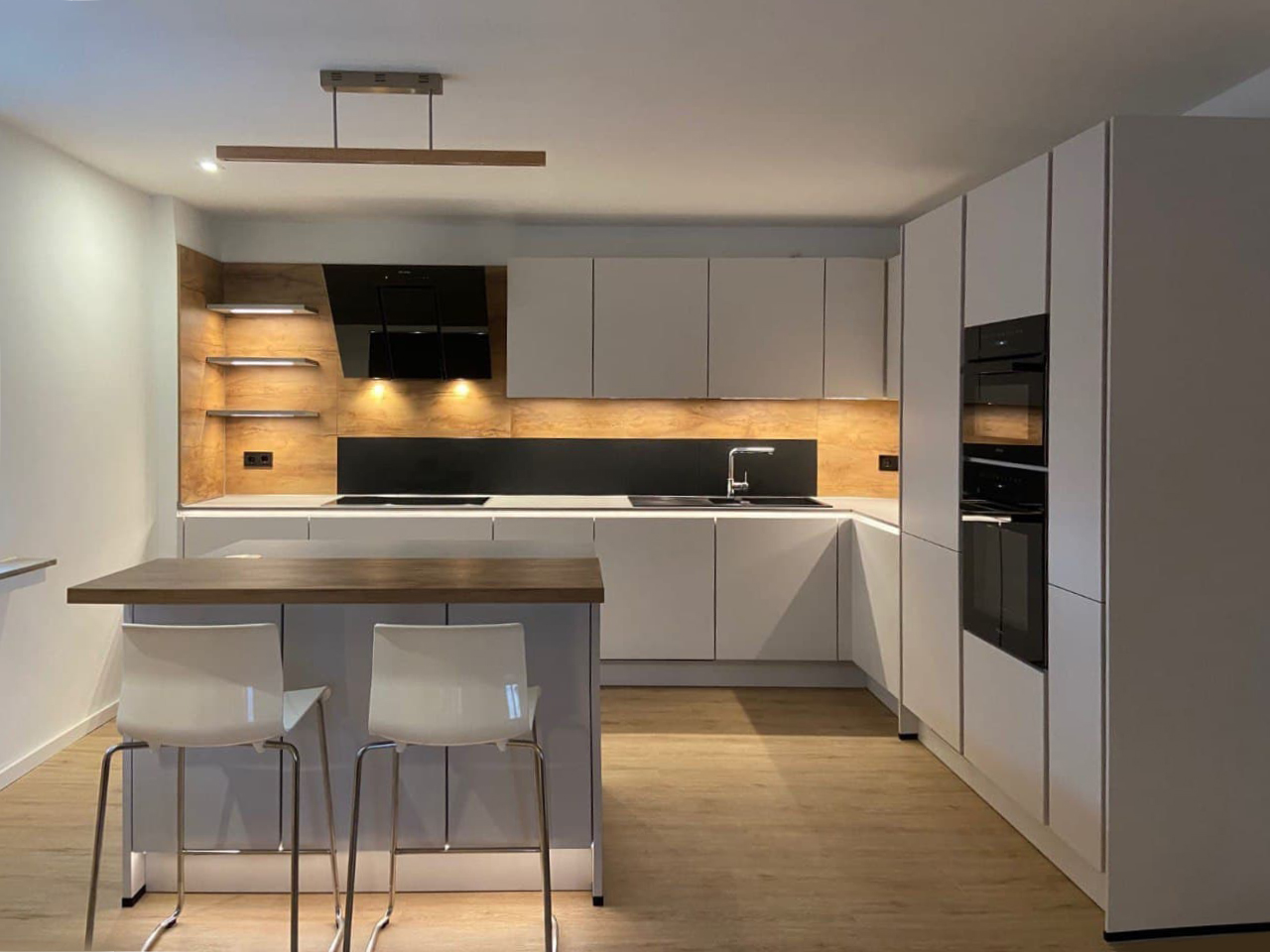Home & Decor
Roofers Near Me: Finding Reliable and Affordable Roofing Services

When it comes to maintaining or repairing a roof, finding a reliable and trustworthy roofer can be a daunting task. Whether it’s a minor repair or a major replacement, homeowners want to ensure that the job is done right the first time. Searching for “roofers near me” is a common solution for many homeowners who are in need of roofing services.
By searching for “roofers near me“, homeowners can quickly access a list of local roofing contractors in their area. This can save time and effort in researching and comparing different contractors. Additionally, choosing a local roofer can provide peace of mind knowing that they are familiar with the climate and building codes in the area, and can provide personalized recommendations and solutions for each individual homeowner.
However, it’s important to do your due diligence when selecting a roofer. Homeowners should research the company’s reputation, experience, and licensing before hiring them. Reading reviews from previous customers and checking their accreditation with organizations such as the Better Business Bureau can also provide valuable insight into the quality of their work and customer service.
Finding Local Roofers
When it comes to finding a roofer, one of the first things that comes to mind is finding a local professional. Hiring a local roofer has many benefits, including faster response times, better knowledge of local building codes, and more personalized service. Here are some tips on how to find local roofers in your area.
Benefits of Hiring Locally
Hiring a local roofer has several benefits that can make the roofing process smoother and more efficient. Local roofers are familiar with the climate and weather patterns of the area, which can help them choose the right materials and techniques for your roof. They also understand local building codes and regulations, which can prevent delays and ensure that your roof is up to code.
In addition, local roofers are often more responsive and accessible than out-of-town companies. They can provide more personalized service, and they are more likely to be available for emergency repairs or maintenance. Finally, hiring a local roofer supports the local economy and helps build a sense of community.
How to Search for Roofers Nearby
There are several ways to find local roofers in your area. One of the easiest is to search online for “roofers near me” or “local roofing companies.” This will bring up a list of local roofers, along with their contact information and reviews from previous customers.
Another option is to ask for recommendations from friends, family, or neighbors who have recently had their roofs repaired or replaced. They may be able to provide valuable insights into the quality of local roofing companies and their services.
Finally, it’s important to do your research before hiring a local roofer. Look for companies with a good reputation, positive reviews, and a track record of quality work. Ask for references and check their credentials, such as licensing and insurance. By taking the time to find a reputable local roofer, you can ensure that your roof is in good hands.
Evaluating Roofing Contractors
When it comes to finding the right roofing contractor, it can be overwhelming to choose from the many options available. Here are some key factors to consider when evaluating roofing contractors.
Checking Licenses and Insurance
Before hiring a roofing contractor, it’s important to verify that they have the necessary licenses and insurance. A reputable contractor should have a valid license and adequate insurance coverage for their employees and work. This protects both the contractor and the homeowner in case of any accidents or damages that may occur during the roofing project.
Reading Reviews and Testimonials
Another important factor to consider is the reputation of the roofing contractor. Reading reviews and testimonials from previous customers can provide valuable insight into the quality of their work, customer service, and overall experience. Look for contractors with a high number of positive reviews and testimonials, as this indicates a history of satisfied customers.
Comparing Quotes and Services
Finally, it’s important to get quotes and compare services from multiple roofing contractors. This allows homeowners to compare pricing, services offered, and warranties to find the best fit for their needs and budget. It’s important to note that the lowest price may not always be the best option, as quality and experience should also be taken into consideration.
By evaluating these key factors, homeowners can make an informed decision when choosing a roofing contractor.
Home & Decor
How to Create the Perfect Kitchen Lighting: The Complete Guide

A modern kitchen is not only a place for cooking, but also the center of family life, where people spend time at dinner, talk, and spend time in the company of loved ones and friends. Therefore, it is important to provide the right lighting, which will not only create comfortable conditions for cooking but also emphasize the style and functionality of the interior.
In this guide, we’ll cover the basics of creating the perfect kitchen lighting, mistakes to avoid, popular lighting options, and ways to save energy.
Multi-level lighting is the main principle
One of the main principles of ideal kitchen lighting is multi-level. Each functional area of the kitchen, such as the cooking area, dining table, and work surface, should be equipped with light sources. This will create comfortable conditions for various tasks and use the space effectively.
Pro Tip: “Revamp your kitchen with professional remodel services in Round Rock, TX. Our skilled team creates beautiful, functional spaces. Book your consultation today and start your transformation!”

Main lighting
The main lighting of the kitchen plays an important role in maintaining comfortable lighting in the room during the dark hours of the day. It is usually carried out with the help of general ceiling lighting, which evenly illuminates the entire area of the kitchen.
However, when planning lighting, the following mistakes should be avoided:
Mistake #1: Planning lighting before the design project is complete. Before you start choosing lighting fixtures, you need to determine the layout of the kitchen and the location of the furniture.
Solution: First, decide on the furniture layout, then select and install lighting fixtures for each functional area of the kitchen.
Mistake #2: Using only one light source in the center of the kitchen.
Solution: To provide uniform lighting in the kitchen, use different types of lighting fixtures such as recessed lights, pendant lights, and LED lights.
Error #3: Lack of ability to adjust lighting brightness.
Solution: Installing a switch with a rheostat will allow you to adjust the brightness of the lighting depending on your needs.
Spotlighting

Spotlights are often used to create additional lighting for functional areas of the kitchen. They allow you to create targeted lighting and highlight certain interior elements.
Illumination of the working area
The kitchen work area where food is prepared should have sufficient lighting for comfortable work. For this purpose, various types of lighting can be used, such as overhead lights, spotlights, or pendant lamps.
Dining Table Lighting

The dining table in the kitchen also requires special attention when planning the lighting. Popular options for dining table lighting are pendant lamps, which create a cozy atmosphere and emphasize the style of the interior.
Additional lighting elements
Additional lighting elements such as recessed LED strips, shelf and cabinet lighting, and decorative lighting can effectively complement the main kitchen lighting and create a unique interior accent.

Saving electricity
When planning kitchen lighting, you should also pay attention to energy-saving options. To do this, you can use energy-efficient lamps, install switches with adjustable brightness, and use automatic motion sensors.
Pro Tip: “Enhance your kitchen with expert cabinet remodel services in Coppell, TX. Our team designs and installs custom cabinets that fit your style and needs. Contact us for a consultation today!”
Conclusion
Creating the perfect kitchen lighting is a complex task that requires careful planning and selection of the right fixtures and light sources. By following the principles of multi-level lighting, avoiding common mistakes, and taking into account energy-saving opportunities, you can create comfortable and functional lighting that will highlight the style of your kitchen and provide optimal conditions for its use.
One of the key points when choosing kitchen lighting is to consider its size and layout. Small kitchens may require more compact lighting fixtures that do not take up much space, as well as dimmable lighting fixtures to create a visual space. At the same time, larger kitchens can use larger, brighter light sources to evenly illuminate the entire area.
In addition to the functional aspects, lighting can also play an important role in creating an atmosphere and a cozy atmosphere in the kitchen. For this, various lighting effects can be used, such as backlighting colored walls or using LED strips to create pleasant background lighting.
In addition, it is worth paying attention to the quality of lighting and its impact on visual comfort. Correctly selected light sources will help to avoid obscuring shadows and glare, which will make working in the kitchen more pleasant and efficient.
An important aspect when choosing kitchen lighting is also its durability and energy efficiency. Using LED lamps will allow you to save a lot of electricity and reduce lighting costs in the long term.
So, creating the perfect kitchen lighting is a complex process that requires careful consideration and consideration of various aspects. By following the tips and recommendations in this guide, you will be able to create lighting that will not only provide optimal conditions for working in the kitchen but will also become an important element of its design and atmosphere.
Home & Decor
Roof Shingles Repair and Siding Installers: Expert Solutions for Your Home Exterior Needs

Roof shingles and siding are two crucial components of a home’s exterior that protect it from the elements and add to its aesthetic appeal. However, over time, these materials can become damaged or worn, requiring repair or replacement. This is where roof shingles repair and siding installers come in.
Roof shingles repair involves fixing or replacing damaged or missing shingles on a roof. This is important because damaged shingles can lead to leaks, which can cause water damage and even structural issues if left unchecked. Siding installation, on the other hand, involves putting up new siding on a home’s exterior. This can be done for a variety of reasons, such as improving the home’s insulation, enhancing its curb appeal, or replacing damaged or worn siding.
Whether you need roof shingles repair or siding installation, it’s important to hire a professional who has the knowledge and experience to get the job done right. With the right contractor, you can ensure that your home is protected and looks its best for years to come.
Roof Shingles Repair
Assessing Damage to Roof Shingles
Before starting any repair work, it is essential to assess the damage to the roof shingles. Look for signs of damage such as curling, cracking, or missing shingles. It is also important to check for any signs of water damage or leaks.
Essential Tools and Materials for Repair
To repair roof shingles, you will need a few essential tools and materials. These include a ladder, roofing cement, roofing nails, a hammer, a utility knife, and replacement shingles. It is important to ensure that you have the correct size and colour of replacement shingles to match the existing ones.
Step-by-Step Guide to Repairing Shingles
- Start by removing the damaged shingles. Use a pry bar to lift the shingle above the damaged one, and then remove the nails holding the damaged shingle in place.
- Cut a new shingle to the correct size and shape, if necessary. Slide the new shingle into place, and secure it with roofing nails.
- Apply roofing cement to the edges of the new shingle to seal it in place.
- Repeat the process for any other damaged shingles.
Preventative Measures and Maintenance
To prevent future damage to roof shingles, it is important to perform regular maintenance. This includes cleaning the gutters, removing any debris from the roof, and inspecting the roof for signs of damage or wear. It is also recommended to have a professional inspection of the roof every few years to identify any potential issues before they become major problems.
Overall, repairing roof shingles can be a simple and straightforward process with the right tools and materials. By following these steps and performing regular maintenance, homeowners can ensure the longevity and durability of their roof.
Siding Installation
Choosing the Right Siding Material
When it comes to choosing the right siding material, there are several options available. Each material has its own benefits and drawbacks, so it’s essential to consider the factors that matter most to you. Some of the most popular siding materials include vinyl, wood, and fiber cement.
Vinyl siding is a popular choice due to its affordability, durability, and low maintenance requirements. It comes in a wide range of colors and styles, making it easy to find an option that suits your home’s aesthetic.
Wood siding offers a natural and traditional look that is hard to beat. However, it requires regular maintenance to prevent rot and insect damage. Cedar and redwood are popular wood siding options due to their resistance to decay.
Fiber cement siding is a relatively new option that has gained popularity due to its durability and low maintenance requirements. It’s made from a mixture of cement, sand, and cellulose fibers, making it resistant to fire, insects, and rot.
Tools and Equipment for Siding Installation
Before beginning the siding installation process, it’s essential to have the right tools and equipment. Some of the necessary tools include a circular saw, a level, a chalk line, a hammer, a pry bar, and a utility knife.
Other equipment that may be required includes scaffolding, ladders, and safety gear such as gloves and eye protection. It’s essential to follow all safety guidelines when working at heights to prevent accidents and injuries.
Installation Techniques for Different Siding Types
The installation process for each siding material will vary depending on the type of siding chosen. For example, vinyl siding typically requires a starter strip to be installed at the bottom of the wall, followed by the panels being overlapped and secured with nails.
Wood siding requires a moisture barrier to be installed before the siding is attached to the wall. The wood must be properly sealed and painted to prevent rot and insect damage.
Fiber cement siding is installed similarly to wood siding but requires special cutting tools due to its density. It’s essential to follow the manufacturer’s instructions carefully to ensure proper installation and prevent damage to the siding.
In conclusion, choosing the right siding material, having the necessary tools and equipment, and following proper installation techniques are crucial for a successful siding installation project. With the right preparation and attention to detail, homeowners can enjoy a beautiful and durable exterior for years to come.
Home & Decor
Wall Accents Wood: Adding Warmth and Texture to Your Space

Wall accents wood has become a popular trend in interior design in recent years. They add warmth and texture to any room, making it feel more inviting and cozy. Wood accents can come in many forms, from shiplap walls to wooden wall art, and can be incorporated into any design style.
One of the benefits of wall accents wood is their versatility. They can be used in any room of the house, from the living room to the bedroom to the kitchen. They can be stained or painted to match any color scheme, and can be customized to fit any design aesthetic. Additionally, wood accents can be used to create a focal point in a room, drawing the eye and adding interest to an otherwise plain wall.
Overall, wall accents wood are a great way to add warmth and texture to any room in the house. With their versatility and customization options, they can fit into any design style and add a touch of natural beauty to any space.
Types of Wood Wall Accents
Reclaimed Wood Accents
Reclaimed wood accents are a popular choice for those who want to add a touch of rustic charm to their walls. These accents are made from wood that has been salvaged from old buildings, barns, and other structures. The wood is then cleaned, sanded, and treated to give it a new lease on life. Reclaimed wood accents come in a variety of colors and textures, depending on the source of the wood.
Rustic Wood Panels
Rustic wood panels are another popular option for those who want to add a touch of natural beauty to their walls. These panels are made from solid wood and come in a variety of finishes, including natural, stained, and painted. Rustic wood panels can be used to create a warm and inviting atmosphere in any room of the house.
Modern Wood Art
For those who prefer a more contemporary look, modern wood art is a great choice. These pieces are made from high-quality wood and come in a variety of shapes and sizes. Modern wood art can be used to create a bold and striking focal point in any room. Some popular styles include geometric shapes, abstract designs, and minimalist pieces.
Overall, there are many different types of wood wall accents to choose from. Whether you prefer a rustic, natural look or a more modern, contemporary style, there is sure to be a wood accent that will suit your tastes and needs.
Installation and Maintenance
Installing Your Wood Accents
Installing wood accents can be a simple and straightforward process. Before beginning, ensure that you have all the necessary tools and materials, including a level, drill, screws, and wood adhesive.
First, determine the placement of your wood accents. Use a level to ensure that they are straight and mark the placement with a pencil. Next, apply wood adhesive to the back of the accent and press it firmly onto the wall.
Finally, use screws to secure the accent in place. Be sure to use screws that are appropriate for the thickness of the accent and the type of wall you are attaching it to.
Caring for Wood Accents
Proper maintenance of your wood accents can help extend their lifespan and keep them looking beautiful for years to come. Here are some tips for caring for your wood accents:
- Dust your wood accents regularly with a soft, dry cloth to prevent the buildup of dirt and debris.
- Avoid using harsh chemicals or abrasive cleaners on your wood accents, as they can damage the finish.
- If your wood accents become stained or dirty, clean them with a mild soap and water solution and dry them thoroughly.
- Keep your wood accents away from direct sunlight and sources of heat, as this can cause them to warp or fade over time.
By following these simple steps, you can ensure that your wood accents remain a beautiful and stylish addition to your home for years to come.
-

 Entertainment9 months ago
Entertainment9 months agoNetWyman Blogs: Exploring the Best Tech Content Online
-

 Tech9 months ago
Tech9 months agoExpotab.com Login: How to Access Your Account
-

 Blog9 months ago
Blog9 months agoAndre Hakkak Net Worth: A Look at the Successful Entrepreneur’s Wealth
-

 Tech8 months ago
Tech8 months agoPentest as a Service: A Comprehensive Guide
-

 Health9 months ago
Health9 months agoSkin Care in Hindi: The Ultimate Guide to Well-Health Organic Products
-

 Blog9 months ago
Blog9 months agoAndre Hakkak: A Successful Entrepreneur in the Tech Industry
-

 Health8 months ago
Health8 months agoBest Recovery Drink for Cyclists: Top Picks for Optimal Performance
-

 Business8 months ago
Business8 months agoFinancing Options for Small Businesses: A Comprehensive Guide




